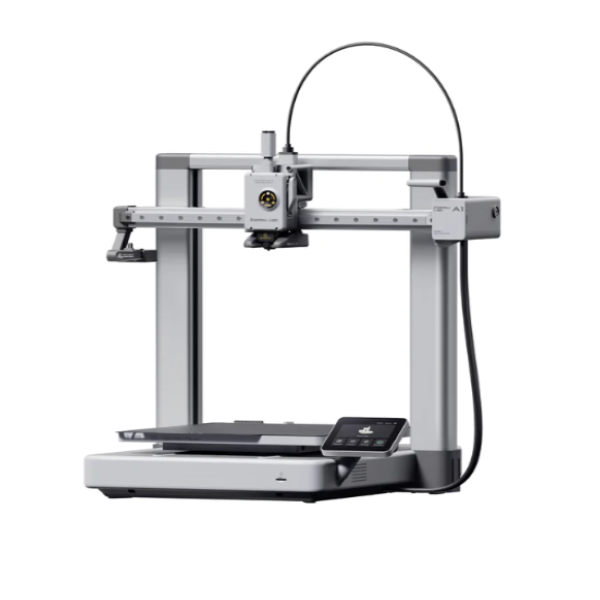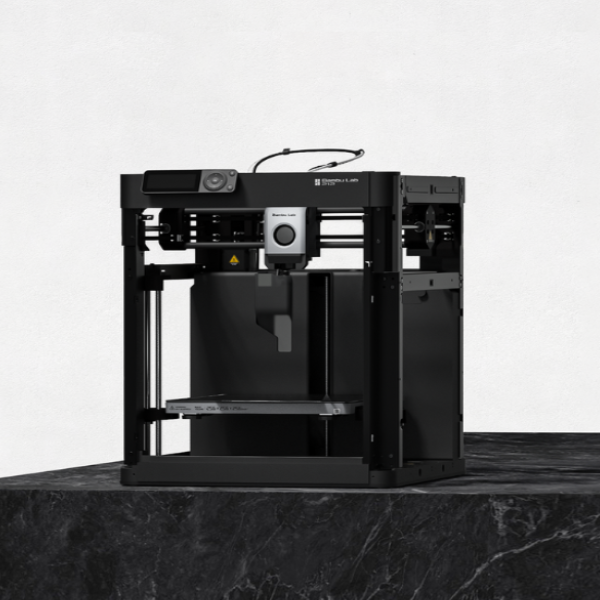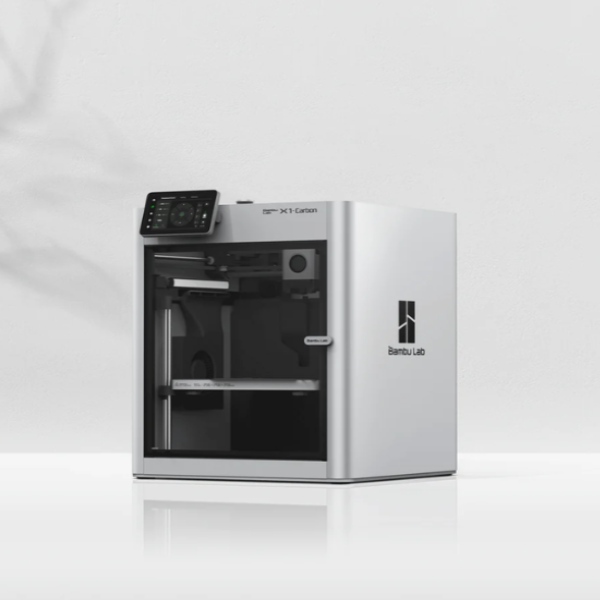The Bambu Lab 3D printing ecosystem is one of the best in the world.
You get a range of FFF printers (A1, P1, and X1 series) catering to various needs and skill levels, the AMS for multi-material printing, Bambu Studio software for slicing and print management, and the Bambu Handy mobile app for remote control.
Bambu Lab also produces its filaments and innovates with accessories. The ecosystem’s strength lies in its user-friendly approach, offering features like auto-calibration, preset profiles, and integrated troubleshooting to simplify 3D printing for users.
All Bambu Lab desktop 3D printers use Fused Filament Fabrication (FFF) technology, extruding melted thermoplastic material through a nozzle to construct three-dimensional objects layer by layer.
In this article, we provide a rundown of Bambu Lab 3D printers and compare them to help you choose the right desktop printer.

A1 Series: Entry-Level
- Models: A1 and compact A1 Mini
- Features:
- Open design
- 300°C max nozzle temperature
- Compatible with common materials (PLA, PETG)
- Auto-calibration
- 3.5-inch touchscreen interface
- Ideal for: Beginners and space-conscious users

P1 Series: Mid-Range
- Models: P1P (open) and P1S (enclosed)
- Key Improvements:
- Enclosed printing option (P1S)
- Expanded material compatibility (ABS, ASA)
- Filament run-out detection
- Built-in camera for remote monitoring
- Ideal for: Intermediate users requiring more material options

X1 Series: Advanced
- Models: X1 Carbon and X1E
- Premium Features:
- Hardened steel components
- Micro Lidar for enhanced precision
- Wide material compatibility (including carbon/glass-reinforced filaments)
- X1E Enhancements:
- Higher nozzle temperature (320°C)
- Chamber heating up to 60°C
- Advanced air filtration
- Enhanced networking for industrial use
- Ideal for: Professional and industrial users
Ecosystem Compatibility
- All series work with Bambu Lab’s ecosystem
- Automatic Material System (AMS) support:
- A1 Series: AMS Lite (optional)
- P1 and X1 Series: Full AMS support
Bambu Lab Comparison Table
| Feature | A1 Series | P1 Series | X1 Series |
| Models | A1, A1 Mini | P1P, P1S | X1 Carbon, X1E |
| Build Volume | A1: 256 x 256 x 256 mm
A1 Mini: 180 x 180 x 180 mm |
256 x 256 x 256 mm | 256 x 256 x 256 mm |
| Enclosure | Open | P1P: Open
P1S: Non-heated enclosure |
Enclosed |
| Max Nozzle Temp | 300°C | 300°C | X1C: 300°C
X1E: 320°C |
| Max Bed Temp | 100°C | 100°C | X1C: 110°C (220V), 120°C (110V)
X1E: 120°C |
| Chamber Heating | No | No | X1E only: Up to 60°C |
| Materials | PLA, PETG, TPU, PVA, HIPS | All A1 materials + ABS, ASA (PA, PC, PET possible but not recommended) | All P1 materials + PA, PC, PET, polymer materials, carbon/glass-reinforced filaments |
| Cooling | Basic | P1S: Chamber temp regulator fan, MC board cooling fan | Advanced cooling system |
| Air Filtration | None | P1S: Activated carbon filter | X1C: Activated carbon filter
X1E: G3 pre-filter, H12 HEPA filter |
| Auto Calibration | Yes | Yes | Yes, with Bambu Micro Lidar for enhanced precision |
| Display | 3.5-inch 320 x 240 IPS touchscreen | 2.7-inch 192 x 64 screen | 5-inch 1280 x 720 touchscreen |
| Camera | No | 1280 x 720 with timelapse support | 1280 x 720 with timelapse support |
| AMS Compatibility | AMS Lite (optional) | Full AMS support | Full AMS support |
| Networking | Wi-Fi | Wi-Fi | Wi-Fi, X1E adds Ethernet and enhanced security |
| Key Features | – Quick-swap nozzles – Silent mode (< 48 dB) – Compact design (A1 Mini) | – Filament run-out detection – Power loss recovery – Enclosed printing (P1S) | – Hardened steel components – Micro Lidar system – Advanced air filtration (X1E) – Chamber heating (X1E) |
Read our more detailed Bambu Lab comparison here.
Summing up
The A1 Series is perfect for hobbyists and small businesses needing a reliable 3D printer for small print runs. The non-enclosed build platform keeps costs down, and you don’t miss out on any of the premium Bambu Lab software that the more expensive machines get.
The P1 Series is a step up in price and quality. The P1P is a non-enclosed variant of the P1S, with the same capabilities and build volume, while the P1S has an enclosed (non-heated) build chamber for wider filament compatibility.
For professionals and manufacturers, the X1 Carbon reigns supreme. It has a Bambu Micro Lidar that probes the nozzle height, calibrates the flow, and scans the first layer to assure quality. The X1E takes things further with enhanced network security features and enterprise-grade network access control. It also offers better air filtration with a G3-grade pre-filter, H12-grade HEPA filter, and particulate matter filtration.
Top image credit: Bambu Lab Autumn Flowers Modplate




